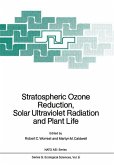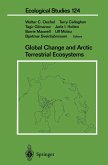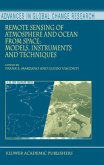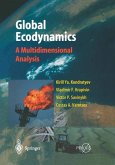From microbial to plant ecosystems, this book examines how changes in UV radiation, caused by anthropogenic ozone depletion, as well as changes in radiation levels throughout the evolution of life on Earth, can alter species composition and interspecies competitiveness. It focuses on the evolutionary aspects of the effects of UV as well as the various synergistic interactions of UV radiation with other environmental factors. Because our knowledge of UV effects on whole ecosystems is still at a relatively early stage, an important part of each chapter is an overview of future research directions and indications of where new date and knowledge is needed. This book discusses UV radiation, its effects on ecosystems and the likely evolutionary consequences of changed UV radiation environments, past, present and future. The first two chapters examine the history of the UV radiation climate of earth and the factors that determine organismal and ecosystem exposure. Their purpose is to give the reader a physical perspective on UV radiation and an understanding of the constantly changing UV environment that ecosystems are exposed to over time. Variations in the UV radiation environment occur at the local level (such as boundary layer and plant canopy effects) through to global-scale changes (such as alterations in the column abundance of UV-B protecting ozone). UV radiation regimes also vary over temporal scales. These alterations occur on time scales of seconds (the movement of clouds and plant canopies) to literally billions of years (gross long-term changes in the composition of the Earth's atmosphere).
In the chapters that follow five specific biological and ecological topics in photobiology are considered. They are effects of UV radiation on amphibians, plants, corals, aquatic microbial ecosystems and Antarctic ecosystems that are exposed to the anthropogenically generated ozone 'hole'. These chapters consider UV radiation effects at a diversity of levels from the biochemical to the community. Their purpose is to provide the reader with our current understanding of the ecological effects of UV radiation, the areas where questions still remain and to provide a perspective from which the reader can better understand questions in evolutionary photobiology. The final chapter investigates the biological consequences of altered extraterrestrial ultraviolet fluxes, which are quite different from those experienced on the Earth.
Our knowledge of the role of UV radiation in shaping ecologies and evolutionary change is still in its infancy. This book brings together a number of authors with the aim of helping to consolidate a better understanding of this interesting area of photobiology.
In the chapters that follow five specific biological and ecological topics in photobiology are considered. They are effects of UV radiation on amphibians, plants, corals, aquatic microbial ecosystems and Antarctic ecosystems that are exposed to the anthropogenically generated ozone 'hole'. These chapters consider UV radiation effects at a diversity of levels from the biochemical to the community. Their purpose is to provide the reader with our current understanding of the ecological effects of UV radiation, the areas where questions still remain and to provide a perspective from which the reader can better understand questions in evolutionary photobiology. The final chapter investigates the biological consequences of altered extraterrestrial ultraviolet fluxes, which are quite different from those experienced on the Earth.
Our knowledge of the role of UV radiation in shaping ecologies and evolutionary change is still in its infancy. This book brings together a number of authors with the aim of helping to consolidate a better understanding of this interesting area of photobiology.








